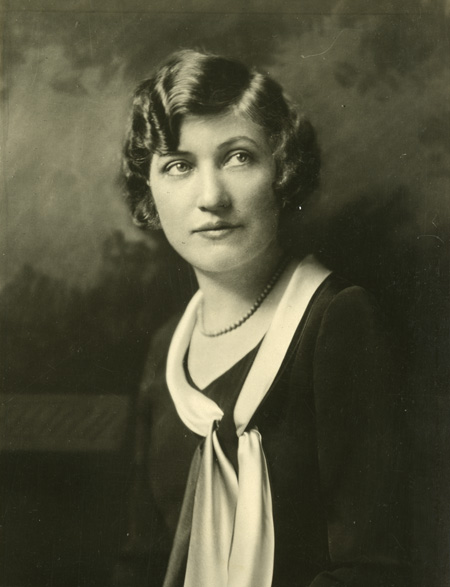Kidnapping of Nell Donnelly
Nell Donnelly and her chauffeur, George Blair, were kidnapped on December 16, 1931. Donnelly had become famous after her 1916 founding of the Donnelly Garment Company, which sold stylish but affordable dresses for daily wear by ordinary women. Backed by the sales of “Nelly Don’s,” as the dresses became known, the company grew into a multi-million dollar business with over 1,000 employees in the 1920s.

Donnelly’s financial success made her a target for kidnappers hoping to garner a large ransom, especially during the turmoil of the Great Depression when kidnappings of wealthy individuals and their loved ones were increasingly common. Within two years of Donnelly’s kidnapping, Mary McElroy (the daughter of city manager Henry McElroy) and Charles Lindbergh Jr. (the son of famed aviator Charles Lindbergh) were prominent kidnapping victims.
Donnelly’s kidnappers threatened to blind her and kill the chauffeur if Paul Donnelly, her husband, contacted the police or failed to pay a $75,000 ransom. Fortunately, her husband called upon James A. Reed, a distinguished Democratic politician whose connections with Kansas City boss Tom Pendergast helped him to become Jackson County attorney, Kansas City mayor, and a three-term U.S. senator. Reed convinced John Lazia, a local mobster also connected with Pendergast, to organize an extra-legal search for the perpetrators. Lazia’s underworld operatives located and freed Donnelly and her chauffer just two days after their kidnapping, and the police later located and arrested the kidnappers.
Within a year of her kidnapping, she divorced Paul Donnelly and purchased his share of the dress company for one million dollars. One of the factors in the divorce was the fact that the biological father of Nell Donnelly’s son, David, was not Paul Donnelly, but James Reed, whose efforts to secure Donnelly’s release in December had most certainly not been the act of a benevolent stranger. She married Reed on December 13, 1933, nearly two years to the day after he facilitated her rescue. Nell Donnelly Reed reportedly lived a full and happy life until her death in 1991, while Paul Donnelly committed suicide in 1934 after marrying someone half his age and spending his entire fortune.
This article has been adapted from an article published at KChistory.org.
This work is licensed under a Creative Commons Attribution-NonCommercial-NoDerivatives 4.0 International License.
